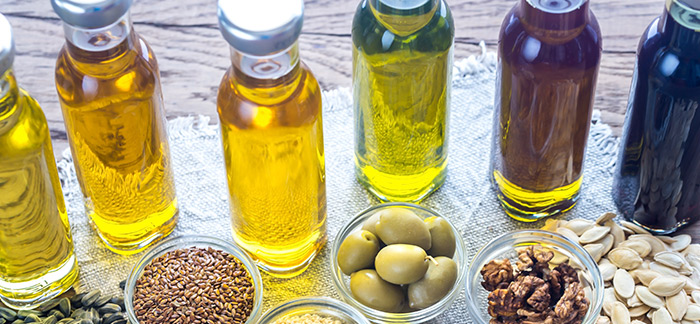|
How hard is it to be confident about our food choices these days? Old wisdom about healthy eating is overturned almost daily, but it can be difficult to figure out which direction we should be taking instead amidst the sensational headlines and opposing claims.
In an attempt to simplify one small but important corner of the nutrition arena, we are taking a closer look at wonderful world of cooking oils, specifically, whether they’re any good for us, and how we should be using them.
Cooking oils used to be saddled with the “unhealthy” label – to be used as little as possible, and always accompanied by a side of guilt. Thankfully, decades of studies have proven that in fact we needn’t feel a smidge of guilt at all. In fact, it is now widely accepted that these oils can form an excellent source of healthy fats in our diets.
But of course, not all fats are created equal. So, while we do need a dose of healthy oils, we also need to be mindful about which ones. To be specific, we are aiming to keep saturated fats to a minimum and embrace the unsaturated ones. How to tell which is which? Highly saturated fats are solid at room temperature (such as bacon grease or cheese) and the less saturated an oil is, the more likely it remains a liquid at all temperatures.
|
|
So, which cooking oils should we be using?
|
 |
|
Well, the answer may surprise you. Partly because the most beloved oil of recent years is actually the least healthy option for cooking. Despite its reputation as the cure of all ills, Coconut oil has by far the highest concentration of saturated fats and thus should be limited. You’re welcome to slather it on your face and hair, but on your plate, you’ll need to keep the quantity in check.
|
 |
|
Peanut oil is full of flavour with a nutty aroma, and is a good source of vitamin E. It is popular in Chinese, South Asian and Southeast Asian cooking, and since it can withstand high temperatures, it is great for stir fries, amongst other Asian-inspired fare.
|
 |
|
Canola oil is popular for a reason! It is a great choice for all types of cooking, thanks to its high smoke point, meaning it can withstand very high temperatures, while still tasting good in a fresh salad. It is also inexpensive and is a good source of those amazing omega-3 fats which can help us fight depression, ADHD, Alzheimer’s, and even cancer. Plus, omega 3’s are great for our eyes!
|
 |
|
Grapeseed oil is extracted from the grape seeds that are left over in the wine-making process. It is good for everything from deep frying to making salad dressing. It’s super mild taste won’t overpower the natural flavours in your dish, so it’s a great choice for those times you want the freshness and flavour of the food to really shine through.This oil should be stored in the fridge so that it doesn’t go rancid.
|
 |
|
Olive oil, beloved of chefs and foodies the world over, is high in monounsaturated fats, and remains a superior choice especially in its most sought-after variety: Extra-virgin. Cold-pressed and unrefined, extra-virgin olive oil is flavourful and rich in antioxidants. It’s “virgin” label signals that it was produced by physical means, without applying heat or chemicals. As olive oil is further refined, it usually becomes lighter in colour and loses its flavour and nutrient richness. “Pure olive oil” is actually a blend of virgin and refined olive oil.
Although it can be used for all types of cooking, extra-virgin olive oil will lose some of its nutritional value at high temperatures, so it is best kept for sautéing vegetables, dipping breads, or as salad dressing.
|
|
And following scandals over false advertising, it helps to check that what you are paying for is the real deal. How? Sources recommend looking for:
|
- A harvest date (must be less than 2 years old);
- A dark bottle, which protects the oil from deterioration through UV light;
- The SA Olive seal to ensure you’re getting the best quality local product.
|
|
|
 |
|
Sesame oil is also common in Asian cuisine, as well as Indian and Middle Eastern cooking. It is highly regarded as a health-boosting oil, aiding heart and skin health amongst other things. It is loved for the nutty flavour it adds to cooking. Roasted sesame oil is even more flavourful and is used as a condiment or to season a hot dish just before serving, rather than for cooking per se. Refrigerate after opening this one.
|
 |
| Sunflower oil is rich in vitamin E and mild in taste, and is another very versatile oil that is high in the good fats making it an excellent choice when it comes to heart health. Like canola, sunflower oil has a high smoke point, and so can be used in anything from deep frying to salad dressing. |
|

